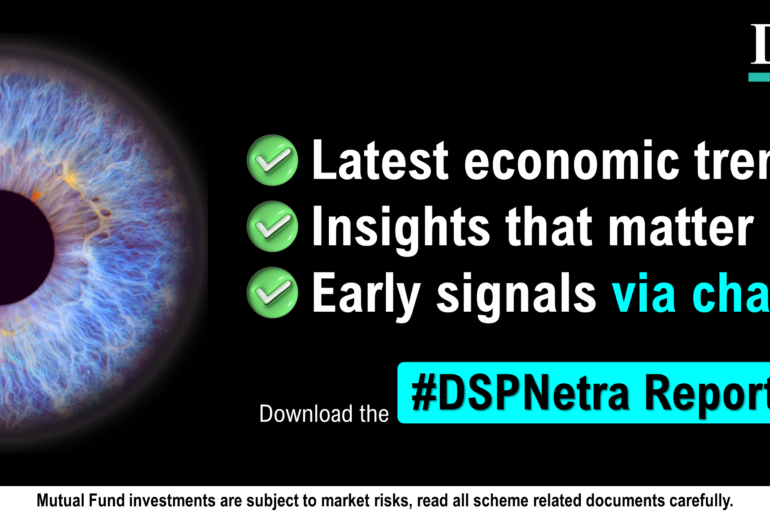Last Updated on Dec 5, 2022 by
Nasdaq is down by 29%, while the Nifty IT index is down by 23% year-to-date (YTD). Both look highly correlated. There is some logic to this, and there isn’t. We will discuss what makes sense here and what doesn’t.
As a scientific investor, we at OmniScience Capital always look at fundamentals differently from the market price. While Mr Market is smart—some academic research says efficient, and some say not—he is not perfectly smart all the time. From time to time, Mr Market doesn’t price things to reflect fundamentals accurately. Sometimes he is more optimistic than the fundamentals suggest and is willing to pay more for stock prices, and sometimes Mr Market is more pessimistic than the fundamentals suggest and is willing to pay much less for stock prices. Long-only, scientific investors make their living investing in stocks where Mr Market is more pessimistic than justified by the underlying fundamentals.
Table of Contents
Why is Nasdaq down?
Currently, the Nasdaq is down because the Fed has been increasing interest rates and reducing liquidity. A high discount rate in companies’ discounted cash flow (DCF) model pulls down their intrinsic value estimates. As the Fed rate kept increasing, the discount rate used by Mr Market kept increasing. Further, the reduction of liquidity also caused the discount rates to increase.
Many smaller companies on Nasdaq currently have high growth rates but negative cash flows. The DCF models of these companies show positive cash flows 5, 10 or 15 yrs from today. Before that, these companies will continue needing large cash infusions to keep growing and thus will have negative cash flows. The intrinsic value estimations of these companies using the DCF model are highly sensitive to the discount rate. These are similar to long-duration bonds; we can call these long-duration equities.
As the Fed increased the interest rates, these companies’ stocks fell since the analysts’ intrinsic value estimates said they were worth much less than the market prices. This was similar to the dotcom bust. This was not fully justified either because it involved the temporary high-interest rates being used for the full lifetime of the company.
But the stocks of companies, many of them mega-caps, which have huge positive cash flows, shorter duration than the companies mentioned above, and whose intrinsic value is much less sensitive to interest rates, and relative terms, also fell. This misapplication by Mr Market of what was true for some technology companies, applied to all technology companies, was irrational behaviour.
Indian IT sector’s reaction
On top of this, the same yardstick was applied to the Indian technology sector, which also has large positive cash flows and benefits from increasing US interest rates because of the typical INR depreciation accompanying it, thus increasing their expected future cash flows and margins. Applying it to the BigTech US companies in the Nasdaq was irrational; applying it to the Indian Tech companies, which benefit from US interest rate hikes, was even more irrational.
Now, of course, Mr Market and the analyst community are very good at rationalising what has already happened. Thus, all the reasons for the economy slowing down or even going into recession impact BigTech, thus justifying the fall.
The flaw in the above argument is that even if there is a recession, it would not be permanent, and the impact on the cash flows would be for a few quarters, while the intrinsic value of the companies depends on the perpetual cash flows of these companies.
Thus, a rational downgrade of non-profitable tech companies resulted in an irrational downgrade of Indian IT services companies.
The Indian IT companies typically provide Cloud migration, other digital services and legacy IT outsourcing services to BFSI, Healthcare, Consumer Discretionary, Consumer Staples, Consumer Services, Communication Services, Media & Entertainment, Oil & Gas, and several other verticals or sectors. The high-tech sector, including Nasdaq companies, are also their customers. Most sectors are likely to continue outsourcing, in some cases, even more during a recession. The higher outsourcing during the Covid-19 downturn in the economy is one recent case in point.
Further, even the Nasdaq customers are likely to continue outsourcing. Their fundamentals are not impacted much as compared to their stock prices. In a recession, all the companies, whether Nasdaq-listed high-tech companies or others, would have temporarily lower revenues or cash flows for a few quarters. They would look at all their costs, including manpower and IT. They are likely forced to outsource even more when they look at rationalising their manpower, and IT costs. With the transformation from traditional high-cost business models to digital-first business models, it becomes more logical to drive down overall costs by outsourcing to Indian IT companies.
Many BigTech companies partner with Indian IT service providers for their Cloud platforms and services. The BigTech Cloud business is expected to grow in the mid-20s, even during the recession. Indian IT services companies have more than 50% of their revenues from the Cloud and other digital transformation services. Thus the growth rate of that portion of the business is expected to be in the mid-20s, and the blended growth rate of the Indian IT companies is expected to be in the 14%-15% range as per the management guidance.
Takeaway
In short, the downfall of Nasdaq itself is not justified; the downfall of Indian IT companies in sympathy is even more unjustified. There is hardly any fundamental impact from Nasdaq companies on Indian IT companies. Net-net has a positive impact with the BigTech Cloud platforms growing and Indian IT companies growing with them.
Disclaimer: Any mention of stocks, securities or ETFs is not a recommendation to buy, sell or hold. We or our clients may be buying, selling or holding the above-mentioned stocks and might change our opinions in future. Investing in equity markets is subject to market risks. Global investing has added risks, including country and currency risks. Investors should take the advice of their financial advisor to make investment decisions according to their individual risk profiles and investment objectives.
This article is written by Dr Vikas V Gupta, CEO and Chief Investment Strategist at OmniScience Capital. He believes that “Chasing Alpha leads to Risks and Chasing Safety leads to Alpha”. Check out smallcases created by OmniScience Capital.
- The Risks And Rewards Of Investing In AI-Focused Companies - Mar 29, 2023
- Do Low P/E Stocks Have the Potential To Deliver High Returns? - Feb 20, 2023
- How Does Nasdaq Impact the Indian IT Sector Market? - Dec 5, 2022



